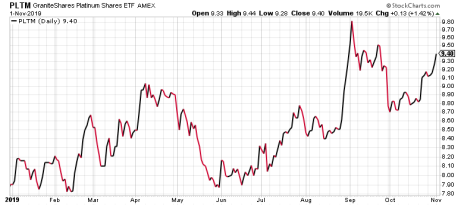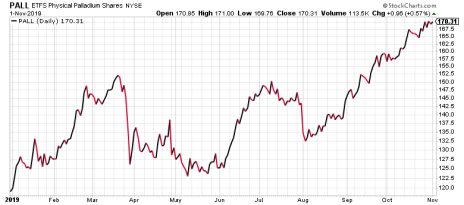“I can calculate the movement of heavenly bodies but not the madness of men.” -Sir Issac Newton
Coffee, Chocolate and Bubbles
Isn’t it exhilarating to find out that something you always thought was bad is, well, actually good?
My wife keeps telling me that I drink too much coffee and eat too much chocolate.
[text_ad use_post='129628']
So imagine my delight when I came across some research that four cups of coffee a day reduces the risk of Alzheimer’s and that dark chocolate is rich in good cholesterol and keeps French women slim and trim. Great news!
Then there are those dreaded investment bubbles – stocks or market sectors that develop massive uptrends.
Many so-called experts recommend that we should avoid bubbles like they’re jellyfish on the beach since they can explode in a nanosecond and vaporize our nest eggs.
But then I heard of GMO chief Jeremy Grantham’s research into the history of bubbles and his provocative strategy of chasing them. This makes a lot of sense to me. After all, didn’t a lot of people get filthy rich during America’s real estate bubble?
Grantham identified 34 bubbles and 32 of them have moved all the way back down to where they started prior to the bubble forming. The other key finding was that bubbles are oftentimes formed over a very long time – over 40 years, on average.
Get Onboard the Bubble – Then Execute an Exit Plan
It seems to me that that a more sensible strategy would be to identify long-term bubbles as early as possible, get a piece of the action, and then have an exit plan in place.
Sailing the South Sea Bubble
The South Sea Company was a monopoly established in 1711 with the purpose of trading in South America and surrounding seas.
Investors dreamed of a lucrative monopoly sending ships laden with English goods and returning in glory bursting with gold and silver bullion. Unfortunately, the company didn’t send its first ship to South America until 1717.
With a lot of government encouragement, continued focus on the huge potential of trade in South America supported by public endorsements by leading merchants, royalty and high society, the company’s shares took off, going from 100 pounds to almost 1,000 pounds in one year.
The next year it all came crashing down.
A Genius Bites the Dust
The problem is that human nature makes exiting a bubble very difficult. A case in point is the brilliant Sir Issac Newton.
Newton was an early investor in the South Seas Company and made a killing by exiting way before the crash.
But the agony of watching all his friends get even richer as the shares soared led him to invest again in a much bigger way. When the bubble burst Newton lost the equivalent of 3 million pounds.
Clearly, calculating the movements of heavenly bodies is much easier than investing.
Where could bubbles be forming right now?
One might be in palladium, the rare and lustrous silvery-white metal discovered in 1803 by William Hyde Wollaston, which has been on a tremendous run over the last couple of years.
In March 2019, according to the Financial Times, Mark Cutifani, the chief executive offer of South African mining company Anglo-American, one of the largest palladium producers, said this:
“It is a bubble but . . . as new models get developed in the auto industry, adjustments will take place and maybe there will be some substitution there. Palladium will stick around these sorts of levels for a while because the cost of changing is probably not worth the change. But over time it will change and platinum will come roaring back.”
2 Precious Metal ETFs to Buy Now
So that’s one big vote of confidence in platinum—if and when palladium craters. To simply, safely and inexpensively invest in platinum, I suggest the GraniteShares Platinum Trust (PLTM), which closely follows the performance in platinum prices. And it’s up 19% so far this year, and is bouncing back nicely after bottoming in early October (see chart below).
Prior to that, the momentum behind palladium could continue for a while, so more aggressive investors might still want some exposure to the silvery-white metal. The best way to play it is the Aberdeen Standard Physical Palladium Shares ETF (PALL), which is up 43% so far in 2019 (see chart below).
Having both of these precious metal ETFs in your portfolio looks like a smart move and time will tell whether my preference for platinum will play out.
If you do decide to invest in either of these precious metal ETFs, the key is to have a disciplined trailing stop-loss strategy and to stick with it.
But one thing is for sure: When your friends and colleagues ask you what you think about gold, watch their heads turn when you casually mention you like platinum and palladium instead.
[author_ad]
*This post has been updated from an original version.



